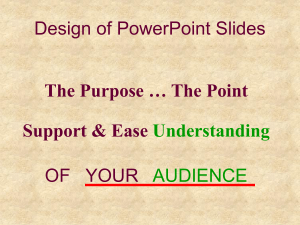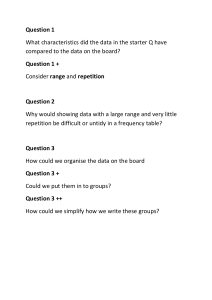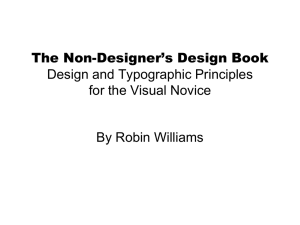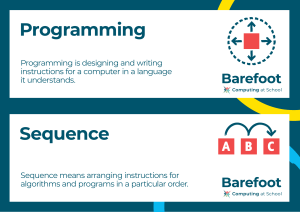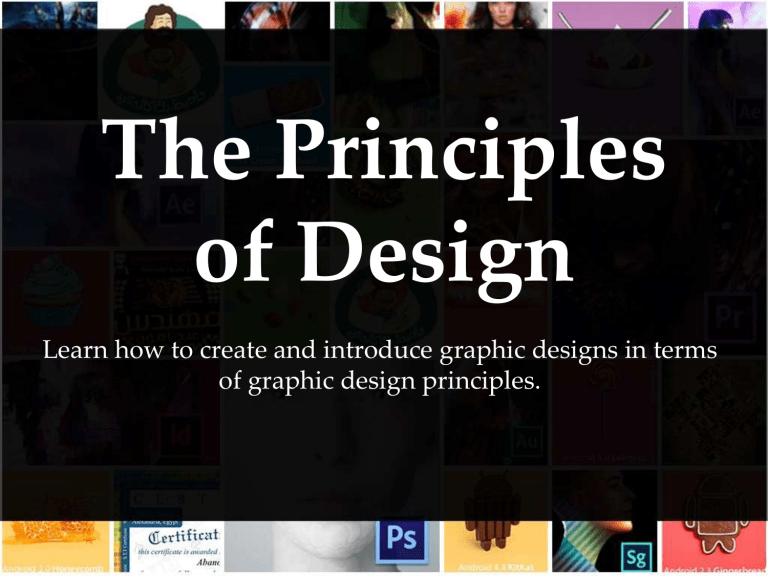
The Principles of Design Learn how to create and introduce graphic designs in terms of graphic design principles. For feedback, communications or questions feel free to contact via Abanoub M. Nassief Alexandria, Egypt E-mail: abanoubcs@gmail.com LinkedIn: http://eg.linkedin.com/in/abanoubmelad/ Facebook: https://www.facebook.com/EngineeroBono Elements of Design Elements Of Design – Definition The elements of design are the things that make up a design. 1) Line 2) Shape 3) Direction 4) Size 5) Texture 6) Color Elements Of Design - Line Line • The linear marks made with a pen or brush or the edge created when two shapes meet. Elements Of Design - Shape Shape • A shape is a self contained defined area ex. Squares, circles, free formed shapes or natural shapes. Elements Of Design - Shape Shape • A positive shape automatically creates a negative shape. Elements Of Design - Shape Shape • A positive shape automatically creates a negative shape. Elements Of Design - Shape Shape • A positive shape automatically creates a negative shape. Elements Of Design - Shape Shape • A positive shape automatically creates a negative shape. Elements Of Design - Direction Direction • All lines have direction Horizontal, Vertical or Oblique. • Horizontal suggests calmness, stability and tranquility. • Vertical gives a feeling of balance, formality and alertness. • Oblique suggests movement and action Elements Of Design - Size Size • Size is simply the relationship of the area occupied by one shape to that of another. Elements Of Design - Texture Texture • Texture is the surface quality of a shape - rough, smooth, soft hard glossy etc. Elements Of Design - Color Color • Color is light reflected off objects. • Color has three main characteristics: • • • hue or its name (red, green, blue, etc.) value (how light or dark it is) intensity (how bright or dull it is). Principles of Design Principles Of Design – Definition The Principles of design are what we do to design elements. How we apply the principles of design determines how successful the design is. 1) Balance 2) Proximity 3) Alignment 4) Repetition 5) Contrast 6) Space Principles Of Design – Balance Balance • Balance in design is similar to balance in physics. A large shape close to the center can be balanced by a small shape close to the edge. • Balance provides stability and structure to a design. • It’s the weight distributed in the design by the placement of your elements. Principles Of Design – Balance Balance Is the design balanced ? Principles Of Design – Balance Balance Balance in graphic design can be achieved by adjusting the visual weight of each element, in terms of scale, color, contrast, etc. Principles Of Design – Balance Balance balance in graphic design can be divided to two types. Principles Of Design – Balance Balance - Symmetrical balance occurs when the visual weight of design elements evenly divided in terms of horizontal, vertical, or radial. This style relies on a balance of two similar elements from two different sides. Principles Of Design – Balance Balance - Symmetrical balance Principles Of Design – Balance Balance - Asymmetrical balance • occurs when the visual weight of design elements are not evenly distributed in the central axis of the page. • This style relies on visual games such as scale, contrast, color to achieve a balance. • We often see a design with the big picture offset by the small but visible text balanced because of the visual games. Principles Of Design – Balance Balance - Asymmetrical balance Principles Of Design – Balance Balance – before & after Principles Of Design – Balance Balance by value occurs when a small area with bright/high value colors is combined with a large area with a dark/low value color. Principles Of Design – Balance Balance by value a man and a dog that has a high value (solid black) with a broad area that has a lower value (gray). Principles Of Design – Balance Balance by shape • Created through field of complex composition with a flat field. • Complex/more detailed field will appear in balance with the flat area in the opposite side. Principles Of Design – Balance Balance by texture Small area with an interesting texture looks balanced when combined with a large flat area (no texture). Rippling water has a water texture which attracts the focus, appears balanced with a wider area but not textured. Principles Of Design – Proximity Proximity • Proximity creates relationship between elements. • It provides a focal point. • Proximity doesn’t mean that elements have to be placed together, it means they should be visually connected in someway. Principles Of Design – Balance Balance by position another example of Asymmetric balance, where a large object on one side balanced by putting the smaller objects on the other side. Principles Of Design – Balance Balance by position Principles Of Design – Balance Balance by eye direction help guide the eye and mind movement of the viewer. They can also bind the work into a single entity. Principles Of Design – Balance Balance by eye direction • Can also occur when we lead the reader's eyes to the main content. • The objects are used as "tools" to guide the reader's eyes composed with a larger area, while the main content displayed in a smaller area. Principles Of Design – Proximity Proximity Principles Of Design – Proximity Proximity Principles Of Design – Proximity Proximity Principles Of Design – Proximity Proximity Principles Of Design – Proximity Proximity Principles Of Design – Proximity Proximity Principles Of Design – Alignment Alignment • Allows us to create order and organization. • Aligning elements allows them to create a visual connection with each other. Principles Of Design – Alignment Alignment Principles Of Design – Alignment Alignment Principles Of Design – Alignment Alignment Principles Of Design – Alignment Alignment Principles Of Design – Alignment Alignment Principles Of Design – Alignment Alignment Principles Of Design – Repetition Repetition • Repetition strengthens a design by tying together individual elements. • It helps to create association and consistency. • Repetition can create rhythm (a feeling of organized movement). Principles Of Design – Repetition Repetition Principles Of Design – Repetition Repetition Principles Of Design – Repetition Repetition Principles Of Design – Repetition Repetition Principles Of Design – Repetition Repetition Principles Of Design – Repetition Repetition Principles Of Design – Repetition Repetition Principles Of Design – Contrast Contrast • Contrast is the juxtaposition of opposing elements (opposite colors on the color wheel, or value light / dark, or direction - horizontal / vertical). • Contrast allows us to emphasize or highlight key elements in your design. Principles Of Design – Contrast Contrast Simply contrast tells the viewer where to look first Principles Of Design – Contrast Contrast Some types of contrast to keep in mind are the relative darkness (called value in color theory), weight, form, placement, quantity, texture, and scale. Principles Of Design – Contrast Contrast in size Principles Of Design – Contrast Contrast in value Principles Of Design – Contrast Contrast in quantity Principles Of Design – Contrast Contrast in weight Principles Of Design – Contrast Contrast in placement Principles Of Design – Contrast Contrast in texture Principles Of Design – Contrast Contrast Without contrast, a designed piece may appear static, uninteresting, and hard for the reader to access because it is not immediately clear what to look at first. Principles Of Design – Contrast Space • Space in art refers to the distance or area between, around, above, below, or within elements. • Both positive and negative space are important factors to be considered in every design. Principles Of Design – Space Space Principles Of Design – Space Space Principles Of Design – Space Space Principles Of Design – Space Space Thank You

